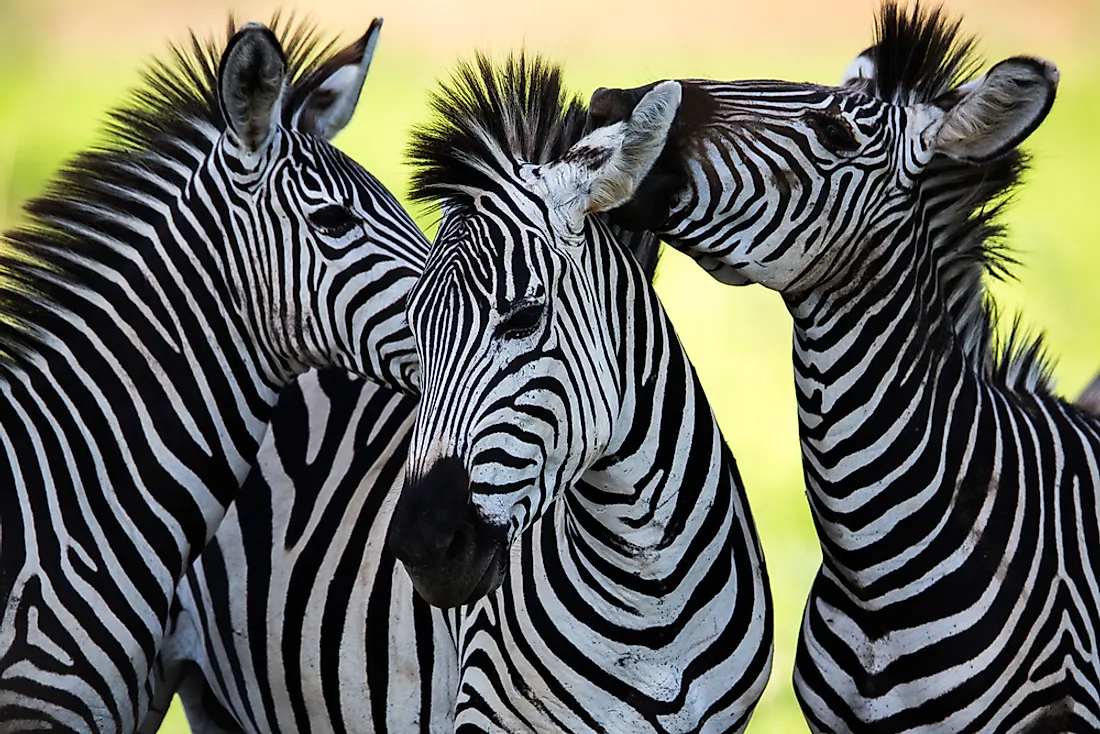Are Zebras White With Black Stripes Or Vice Versa?

Zebras are known for their white and black striped coats. These stripes come in diverse patterns which are unique to each species. The stripes on their main body, forequarters, neck, and head are vertical while on their legs and at the rear are horizontal. Zebras are social creatures which live in herds or small harem. Unlike donkeys and horses, zebras have never been domesticated.
What Color Are Zebras?
Since they have white underbellies, many people believe that zebras are white creatures with numerous black horizontal stripes. However embryological evidence suggests that the zebra’s background color is black and the white is the additional color. As much as the process of determining the pattern is unknown, scientists believe that it is related to selective pigmentation. Therefore, zebras are black animals with white stripes.
How Is the Pattern of Stripes Determined?
Selective pigmentation determines the patterns on a zebra. The embryo of a zebra is black, and the white stripes usually appear in the final embryonic stage. The melanocyte cells on their skin release the pigments which determine the color of the fur. The idea that they are black animals with white stripes makes sense since the patterns are a result of pigment inhibition (white) and activation (black). The furs on a zebra are black in color and areas with white patches have a small amount of pigmentation.
Do All Zebra Species Have the Same Color Pattern?
Even though they have similar patterns and numerous general appearances, these animals have some distinct differences on their coats. The Grevy's zebras have narrow stripes with some black stripes going through the middle of their white bellies and back. The Grevy are listed as threatened due to the severe reduction in their population caused by human intervention and drought.
The Burchell’s zebras are the most famous species which are native to northern Kenya. The Burchell’s zebra has broad stripes which fade to gray as they move down their body, a phenomenon known as shadow striping. The legs of the Burchell’s zebra have a lot of white stripes compared to the other species.
The mountain zebras are in southern Namibia, South Africa, and Angola. They are the least common species, and their main distinctive feature is the dewlap on their necks. Aside from their belly, their whole body is striped. The mountain zebras are also threatened.
What Is the Purpose of the Black and White Stripes?
1) Camouflage
The stripes help the zebras hide in the grass through a process known as disruptive camouflage. Disruptive camouflage functions by breaking the zebra’s outline while masking its shape thus reducing detectability. From a distance, the stripes look like they have merged creating an apparent grey color. Since they herd together, the stripes can act as an optical illusion of a big mass, therefore, deterring the predators from attacking the herd while alone.
2) Regulating Body Temperature
Zebras graze in an open plain for a very long time and have to bear with the intense heat throughout the day. Experts believe that the stripes help them moderate their temperatures. Air moves slower over the white stripe and faster over the black light-absorbing stripes creating convection currents around the animal which helps with the cooling.











